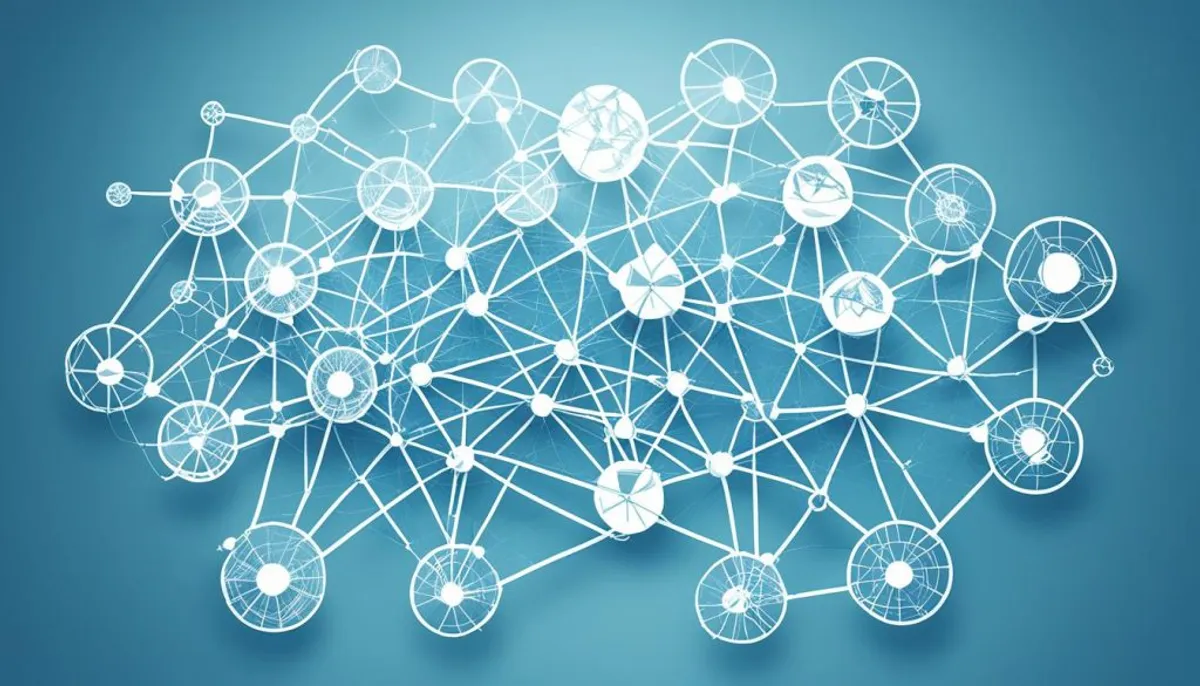The Social Development Network (SDN) is a place where people come together to make a difference. It’s a networking platform that brings together folks from all walks of life. They all want to make a social impact, work on sustainability initiatives, and get involved in civic engagement.
If you’re an activist, a new social entrepreneur, or just want to help empower youth and build communities, SDN is for you. It’s a place to share ideas, learn from each other, and make real connections.

SDN’s Workshops are the heart of the network. They offer a space for deep discussions on many topics, from big global issues to personal growth. Everyone gets to share their stories, insights, and concerns in a supportive and inclusive environment.
These workshops are all about collaboration and knowledge sharing. They help create new solutions and give people the tools to solve tough problems creatively and with strength, including access to digital study materials.
What is the Social Development Network (SDN)?
The Social Development Network (SDN) is a global platform that helps people grow and work together. It’s different from other networking events because it uses an open space approach. This means there’s no set plan or strict order. People can share their thoughts, stories, and worries freely.
A Global Network for Personal and Community Growth
SDN connects people from all over the world, no matter their background. It’s all about growing together and building communities. Members join in workshops and discussions to share ideas, see things from new angles, and feel like they belong.
Open Space Approach: No Fixed Agenda, No Hierarchy
At the heart of SDN is its open space approach. This lets everyone help set the agenda and talk about what matters to them. There are no set topics or speeches. People get to bring up what they’re passionate about, making sure everyone’s voice is heard.
This way of networking and building communities lets connections grow naturally. It helps people improve themselves and their careers in a supportive group, while also focusing on avoiding inappropriate content.
Fostering Collaboration and Knowledge Sharing
At the heart of the Social Development Network (SDN) are the engaging SDN Workshops. Here, people gather to share their stories and insights. These workshops create a space for collaboration and knowledge sharing. Everyone learns from each other’s unique experiences and views.
Workshops: Sharing Insights, Stories, and Concerns
The SDN Workshops use an open space approach. There’s no set agenda or leader. This setup encourages community engagement and personal development. People choose what they want to talk about, from new ideas to personal stories.
By joining these workshops, SDN members learn a lot and build strong bonds. They share valuable insights and grow together. This teamwork leads to new ideas and solutions for their lives, especially with tools like microsoft viva engage.
| Key Benefits of SDN Workshops | Description |
|---|---|
| Knowledge Sharing | Participants share their unique experiences, insights, and concerns, creating a rich tapestry of knowledge and perspectives. |
| Collaborative Problem-Solving | Engaging discussions lead to the exploration of innovative solutions to shared challenges. |
| Community Building | The open and inclusive nature of the workshops fosters a sense of community and mutual support among participants. |
| Personal Growth | By actively participating, individuals gain new insights and perspectives, contributing to their personal development. |
The SDN Workshops show the strength of collaboration and knowledge sharing. They create a place where people can connect, learn, and grow together while promoting the use of inclusive language.

Aligning Economic Activities with Ecological Principles
The Social Development Network (SDN) sees the need to change how we do business to match nature’s ways. We must make sure our designs, tech, and business work with nature, not against it. By using ecological principles, we can make our economy more sustainable. This reduces our environmental impact and moves towards a circular economy.
Our economic actions should fit within nature’s cycles and limits. Like living things, we need to use resources efficiently and recycle them. This way, our economy can last a long time and be strong.
- Use design that follows nature, like closed-loop systems and biomimicry, and regenerative practices.
- Choose tech and processes that cut down on waste, save resources, and make it easy to reuse materials.
- Move towards a circular economy where we don’t have “waste” and resources keep getting used again.
- Work with different groups, like businesses, policymakers, and communities, to find new sustainable economics solutions. These should lessen our environmental impact.
By making our economy follow nature’s rules, we can make a better future for everyone and the planet. This is what the SDN wants for a fair and strong global community.
| Principle | Description | Example |
|---|---|---|
| Closed-Loop Systems | Designing systems that eliminate waste by recycling and reusing resources. | Cradle-to-cradle product design, where materials are continually cycled back into the manufacturing process. |
| Biomimicry | Emulating the strategies and design principles found in nature to create sustainable solutions. | Developing energy-efficient building materials inspired by the structure of seashells or the way trees distribute nutrients. |
| Regenerative Practices | Implementing activities and processes that restore, renew, and revitalize natural ecosystems. | Sustainable agriculture techniques that improve soil health and support biodiversity. |
The Rise of Worker-Owned Cooperatives
The world is changing, and so is the way we work. Worker-owned cooperatives are becoming more popular. In these, employees run their own businesses together. This move towards cooperative economics could lead to more sustainable and fair ways of doing business. It might even end the “law of competition” and bring back the collaborative environments we once knew.
Worker-owned cooperatives are a new way to own and manage businesses. Workers have a big stake in the company’s success. This leads to teamwork, making decisions together, and focusing on the good of all. It means better jobs for everyone, with a sense of community and shared goals.
Collaborative Environments and the Downfall of Competition
Worker-owned cooperatives are changing how we see competition. They value cooperation over competition. Workers work together to solve problems and find sustainable solutions that help everyone. This could change the economy, making businesses focus on being sustainable, caring for employees, and helping their communities more than just making money.
| Traditional Business Model | Worker-Owned Cooperative |
|---|---|
| Focused on maximizing shareholder value | Prioritizes the well-being of workers and the broader community |
| Encourages competition and individual success | Fosters collaboration and shared decision-making |
| Emphasizes short-term financial gains | Promotes long-term sustainability and resilience |
The growth of worker-owned cooperatives could mean a move towards a fairer and more collaborative economy. It could put the needs of workers and communities first, rather than just making money and competing with others. By implementing sustainable solutions, these cooperatives can contribute to long-term economic health and social equity.
Restorative Justice: Understanding the Approach
Traditional justice often focuses on punishment, but restorative justice takes a different path. It aims to fix the root causes of conflict, helping with rehabilitation and social peace.
Restorative justice puts understanding and accountability first, not punishment. It brings together the victim, the offender, and the community. Together, they explore the issues and find ways to heal the harm.
The process includes dialogues led by facilitators. These dialogues let everyone share their stories and needs. This helps everyone understand the conflict better and find ways to fix it.
Community-based solutions are key in restorative justice. It lets people help fix the harm and mend relationships. Additionally, access to islamic learning resources can enhance community understanding and support. It also helps offenders make amends and get back into the community.
Restorative justice has many benefits. It lowers crime rates, makes victims happier, and brings communities closer. As more places use this method, we see more social healing and less conflict.
| Traditional Justice System | Restorative Justice |
|---|---|
| Focus on punishment and retribution | Focus on understanding and rehabilitation |
| Offender as the primary focus | All affected parties (victim, offender, community) involved |
| Adversarial process | Facilitated dialogues and collective problem-solving |
| Emphasis on harsh sentencing | Emphasis on accountability, amends, and reintegration |
The Service Design Network (SDN): Driving Innovation in Service Design
The Service Design Network (SDN) started in 2004. It’s a key non-profit group focused on improving service design. It brings together experts from agencies, businesses, and government through events, publications, and academic partnerships. This helps spread the benefits of service design in both public and private sectors.
Events, Publications, and Academic Collaborations
The SDN is known for its powerful service design events. These events let experts, practitioners, and fans share new ideas and best practices. They create a space for deep talks, sharing knowledge, and sparking new ideas, including discussions on sustainable solutions. This helps push forward service design innovation.
The SDN also has a wide range of design publications. These are both online and in print. They cover the newest trends, case studies, and leadership thoughts in service design. These publications are key for professionals wanting to keep up with the industry’s changes.
Working with top academic institutions is crucial for the SDN. It helps with teaching, researching, and sharing knowledge in service design. These partnerships lead to discussions across different fields, help train the next service design leaders, and show the SDN’s key role in the industry’s future.
| Event | Publication | Academic Collaboration |
|---|---|---|
| Service Design Global Conference | Service Design Network Magazine | Parsons School of Design |
| Service Design Meetups | Service Design Insights Blog | Royal College of Art |
| Service Design Bootcamps | Service Design Case Study Library | OCAD University |
The SDN’s mix of service design events, publications, and academic partnerships keeps driving innovation. It encourages sharing knowledge and boosts the effect of service design in various fields and communities.

Conclusion: Connecting People for Positive Change
The Social Development Network (SDN) shines as a beacon of hope. It brings people together to make a positive change. By focusing on social impact, community engagement, and providing access to islamic learning resources, as well as a shared dream for a better world, SDN has become a key network for good.
SDN works together to help people match their work with nature’s needs. This leads to a future that is both sustainable and fair for everyone.
SDN knows that real positive change comes from linking people with different views and backgrounds. It offers a place for open talks, learning together, and acting as one. This has sparked a global movement, encouraging many to be change-makers in their areas.
Looking ahead, SDN stays true to its main goal. It will keep offering new projects, workshops, and partnerships. These efforts will keep the flow of ideas, sharing of best practices, and empowering people and groups to aim for a better tomorrow. Let’s join this moving journey. Together, we can build a world where social impact, community engagement, and a shared vision for a better future lead our progress.
RelatedRelated articles



